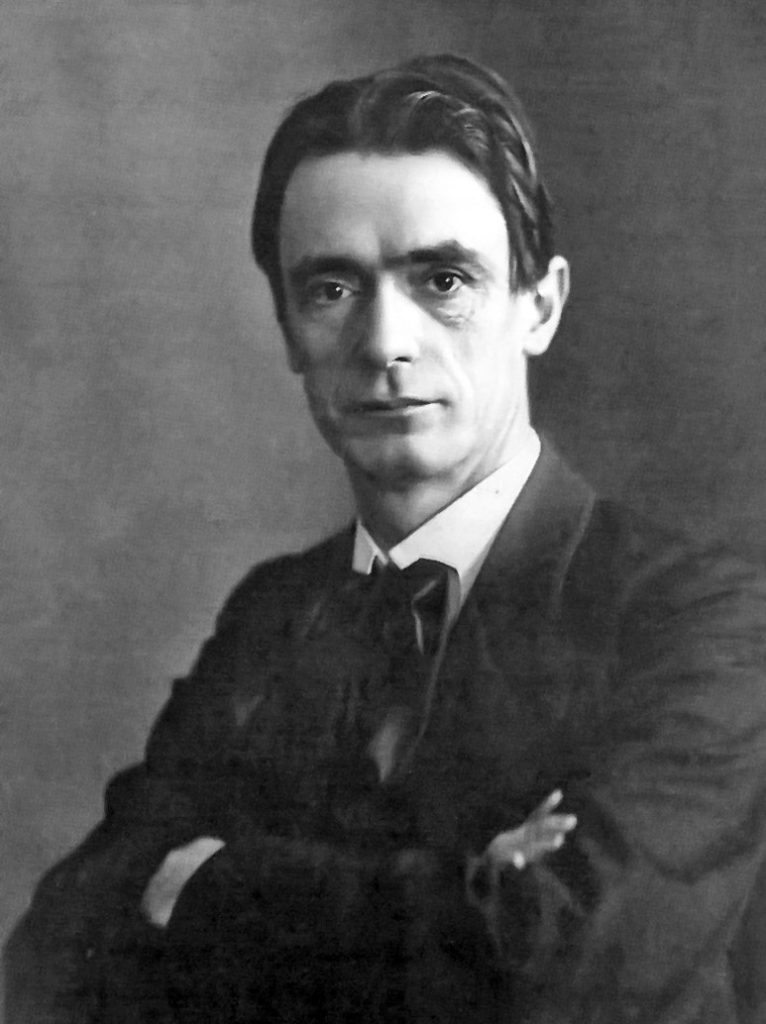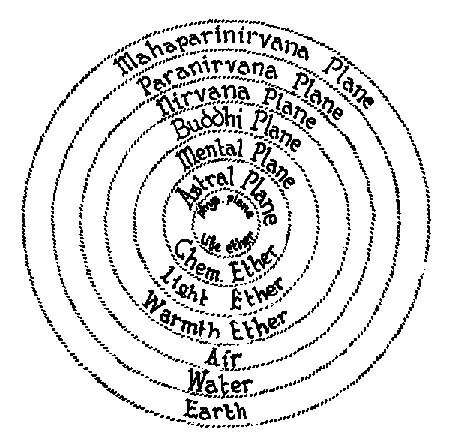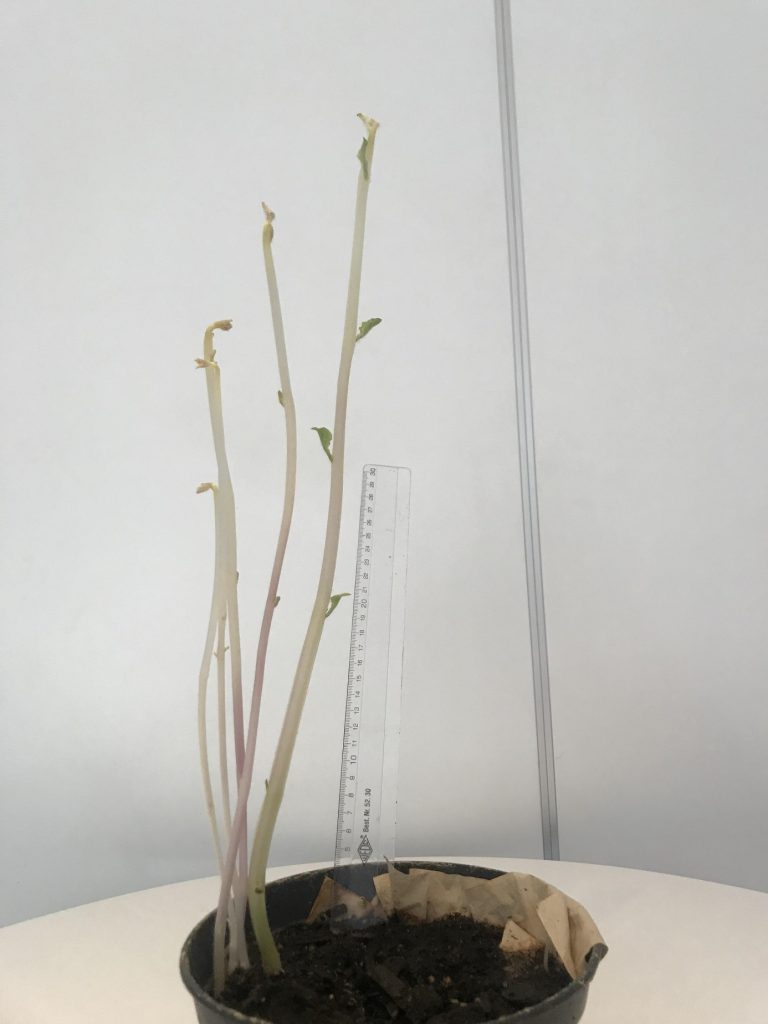Why are humans getting taller as a species?
Reported on by
Robert Gorter, MD, PhD.
July 19th, 2022

(Credit: Getty Images)
This particular answer comes from Michael J. Dougherty, assistant director and senior staff biologist at Biological Sciences Curriculum Study in Colorado Springs, Colorado, USA
Anyone who has ever visited a home built around the time of the Revolutionary War along the back alleys of Philadelphia or Boston has been struck, metaphorically if not literally, by the characteristically low ceilings and small door frames. Even houses built in the early 1800s can make a person of average height by today’s standards wonder how the original occupants managed to stand up and stay conscious long enough to participate in an industrial revolution and a civil war.
For most people, contemporary buildings do not prompt similar claustrophobic concerns. The reason for this difference, as many people have correctly guessed, is that modern humans are taller than those from the eighteenth and nineteenth centuries. In fact, over the last 150 years, the average height of people in industrialized nations has increased by approximately 10 centimeters (about four inches).

Approximately 7 ft / 220 cm tall
But since approximately 1975, there is a sudden spurt in the increase of length but also the tremendous 70%-75% incidence of allergies, autism, and malignancies.
Also, since approximately starting in the mid-1970s, the prevalence of autism has increased from 1:6000 births to ca. 1:40 births.
Also, since the 1980s, the average IQ score has been declining 3 points per decennium. Before, it would increase by 3 points per decennium. As a scientist, is it justified to ask questions like: „How come?“.
Why this relatively sudden growth? Are we evolving to greater heights, vertically speaking? Before answering these questions, we need to remember that evolution requires two things: variation in physical and/or behavioral traits among the individuals in a population; and a way of selecting some of those traits as adaptations, or advantages to reproduction.

Currently, Dutchmen seem to be the tallest in the world: both males and females
For example, finches that have large, powerful beaks also have an advantage in cracking large, tough seeds during periods when small, soft seeds are scarce. As a consequence, large-beaked birds are more likely to eat better, survive longer, and reproduce than small-beaked birds. Because beak shape is an inherited trait (one that is substantially influenced by genes), more successful reproduction by large beaked birds means that the genes predisposing finches to large beaks are transmitted to the next generation in relatively larger numbers than those genes encoding small beaks. Thus, the population of finches in the next generation will tend to have larger beaks than finches in their parent’s generation.

Indian villagers where a few men reach ca. 7 feet (ca. 220 cm)
Let us use this basic operating principle of evolution to predict, retrospectively, the direction of change in human height if evolution were the cause of the change. We know from studies conducted in industrial England that children born into lower socioeconomic classes were shorter, on average than children born into wealthy families. We also know that poorer families had larger numbers of children.

Given those initial conditions, what would evolution predict? The average population should have become shorter because the shorter individuals in the population were, from an evolutionary fitness perspective, more successful in passing on their genes. But this did not happen. Instead, all segments of the population: (rich and poor, from small and large families) increased in height. Thus, natural selection, the process whereby differences in reproductive success account for changes in the traits of a population, does not explain why humans of today are taller.
If evolution does not explain height increases alone, what does? Most geneticists believe that the improvement in childhood nutrition has been the most important factor in allowing humans to increase so dramatically in stature. The evidence for this argument is threefold:
Firstly, the observed increase in height has not been continuous since the dawn of man; it began sometime around the middle of the nineteenth century. In fact, examinations of skeletons show no significant differences in height from the stone age through the early 1800s. Also, during World Wars I and II, when hunger was a frequent companion of the German civilian population, the heights of the children actually declined. They only recovered during the post-war years.
Such data are consistent with recent research indicating that slow growth induced by temporary malnourishment can usually be reversed. Chronic underfeeding during childhood, however, permanently affects stature and other traits, including intelligence.
Secondly, the trend toward increasing height has largely leveled off, suggesting that there is an upper limit to height beyond which our genes are not equipped to take us, regardless of environmental improvements. Interestingly, the age of menarche, which is also influenced by nutrition, has shown a corresponding decrease over this same time period. Some scientists believe that the increase in teenage and out-of-wedlock pregnancies in the developed world may be an unanticipated consequence of improved nutrition.
Thirdly, conditions of poor nutrition are well correlated to smaller stature. For example, the heights of all classes of people, from factory workers to the rich, increased as food quality, production and distribution became more reliable, although class differences still remain. Even more dramatic, the heights of vagrant London boys declined from 1780 to1800 and then rose three inches in just 30 years; an increase that paralleled improving conditions for the poor. Even today, height is used in some countries as an indicator of socioeconomic division, and differences can reveal discrimination within social, ethnic, economic, occupational, and geographic groups.
For those hoping that humans might someday shoot basketballs through 15-foot high hoops, the fact that the increase in human height is leveling off no doubt will be disappointing. For those who understand, however, that our genes are merely a blueprint that specifies what is possible given an optimal environment, a limit on height is just one of many limitations in life, and certainly not the most constraining.
With environmental variables perhaps near their optimum, what are the prospects for evolutionary increases in height as a consequence of changes to our genetic blueprints? Apply the methods of the thought experiment above and see.

Like this woman, men and women get taller and skinnier since the 1980s
But let us look from a different point of view. I do not argue or oppose these considerations: but still, other influences should be considered and added to these arguments. Let us look at the considerations and arguments by Rudolf Steiner, who added many interesting thoughts and considerations.

Rudolf Steiner, PhD. (1861-1925)
Foundations of Esotericism Lecture Five Berlin, 30th September 1905 by Rudolf Steiner (1861-1925)
Rudolf Steiner:
“It is always stressed that in order to progress in occult matters one should be as positive as possible and as little as possible negative; that one should speak less about what is not, than about what is. When this is practiced in ordinary life it is a preparation for work in the sphere of the occult. The occultist must not ask: Has the stone life? But: Where is the life of the stone? Where is the consciousness of the mineral kingdom to be found? That is the highest form of non-criticism. Particularly in regard to the highest questions, this is the attitude of mind that must be cultivated.
In ordinary life, we differentiate three bodily conditions: the solid, the fluid, and the gaseous or airy. The solid must be distinguished from the mineral. Air and water are also minerals. Theosophical writings add to these, four other finer conditions of matter. The first element which is finer than the air is the one that causes it to expand, which always increases its spatial content. What expands the air in this way is warmth; it is really a fine etheric substance, the first grade of ether, the Warmth Ether. Now follows the second kind of ether, the Light Ether. Bodies which shine send out a form of matter which is described in Theosophy as Light Ether. The third kind of ether is the bearer of everything which gives form to the finest matter, the formative ether, which is also called the Chemical Ether. It is this ether that brings about the union of oxygen and hydrogen. And the finest of all the others is that which constitutes life: Prana, or Life Ether.
Science throws together all four kinds of ether. Nevertheless, it will gradually distinguish them in this way. Our description tallies with that of the Rosicrucians, while Indian literature speaks of four different grades of ether.
To begin with, let us take everything that is solid. What is solid has apparently no life. When one transposes oneself into the life of the solid, which becomes possible through living in waking consciousness in the condition described as the dream world, and when one then seeks to discover the solid, for instance by entering into a rocky mountain landscape, then one feels in oneself that one’s own life is altered, one feels life rippling through one. One is not there with consciousness, but with one’s own life, the etheric body; one is then at a place, in a condition which is called the Maha-para-nirvana plane. On this Maha-para-nirvana plane, the life of the solid is to be found. This plane is the other pole of the solid. Through life on the Maha-para-nirvana plane, one acquired another means of perception. When one returns one has experienced the activity of beings in the Maha-para-nirvana plane. It is there that the solid stone has its life.
Secondly there follows what is fluid, water. When in the dream condition one transposes oneself into the sea, then one becomes imbued with the life of the fluid, on the Para-nirvana plane. Through this procedure, one learns to know something about the different planes.
Thirdly, when one transposes oneself in the dream into the air-forming element, one finds oneself on the Nirvana plane. Nirvana means literally, ‘to be extinguished’, as one extinguishes a fire. When one seeks life in it, one is with one’s own life on the Nirvana plane. Man breathes in the air. When he experiences in himself the life of the air, then that is the way to reach the Nirvana plane. This is the reason for the breathing exercises of the Yogis. No one can attain the Nirvana plane if he does not actually practice breathing exercises. They are only Hatha-Yoga exercises when they are carried out on the wrong level. Otherwise, they are Raja-Yoga exercises. One actually inhales life: the Nirvana plane.
Fourthly, below the Nirvana plane is the Buddhi or Shushupti plane. Their warmth has its life. When Buddhi is developed in man, all Kama is transformed into selflessness, into love. Those animals which develop no warmth are also without passion. At higher levels, man must again achieve this passionless condition because he has his life on the Shushupti plane.
Fifthly comes the Devachan or Mental plane; hence the inner connection between wisdom and light. When in dream consciousness one experiences the light, one experiences wisdom within it. This was always the case when God revealed himself in the light. In the burning thorn bush, that is to say, in the light, Jehovah appeared to Moses in order to reveal wisdom.
The sixth is the astral plane. On this plane, the chemical ether has its life. A somnambulist perceives on the astral plane the qualities of the chemicals, and the chemical characteristics because here the chemical ether actually has its life.
The seventh is the physical plane. There the life ether lives in its own element. With life ether one perceives life. This ether is also called the atomic ether because on this plane it has its own life, its own central point. What lives on a particular plane has on this same plane its central point.
As an actual fact, everything we have around us contains the seven planes. We must only ask: Where has each element, the solid, the gaseous, etc., its life?
We have now heard that warmth has its own life on the Buddhi or the Shushupti plane. Thus between all things definite relationships exist. Very striking is the relationship between the ear and speech. In evolution, the ear was present much earlier than speech. The ear is the receptive organ; speech is the organ that produces sound. These two, ear and speech, essentially belong together. Sound as it manifests is the result of vibrations in the air, and every single sound arises from a particular vibration. When you study what exists outside, outside yourself, as sound, then you are studying the arithmetic of the air.

Undifferentiated space would be soundless. Space that is arithmetically organized produces sound. Here we have an example of how one can look into the Akashic Record. If one can rise to the perception of the inner arithmetic which is preserved from sound in space, then at any time one can hear again a sound that someone has spoken. For instance, one can hear what was spoken by Caesar at the crossing of the Rubicon. The inner arithmetic of sound is still present in the Akashic Record. The sound corresponds to something we call Manas. What the ear experiences as sound is the wisdom of the world. In the perception of sound, one hears the wisdom of the world. In the act of speaking one brings forth the wisdom of the world. What is arithmetical in our speech remains in the Akashic Record. When he hears or speaks man expresses himself directly in wisdom. At the present time thinking is the form in which man can bring his will to expression in speech. Today it is only in thinking that we can unfold the will. Only later will it be possible for man, rising above the level of thought, to unfold the will in speech.
The next step is connected with warmth. Man’s activity is to be sought in what streams out from him as inner warmth. Out of what proceeds from warmth: passions, impulses, instincts, desires, wishes and so on, Karma arises. Just as the parallel organ to the ear is the organ of speech, so the parallel organ to the warmth of the heart is the pituitary gland, the Hypophysis. The heart takes up the warmth from outside, as the ear does sound. Thereby it perceives world warmth. The corresponding organ which we must have, in order to be able to produce warmth consciously, is the pituitary gland in the head, which at the present time is only at the beginning of its development. Just as one perceives with the ear and produces with the larynx, so one takes up the warmth of the world in the heart and lets it stream forth again through the pituitary gland in the brain. Once this capacity has been achieved, the heart will have become the organ it was intended to be. There is a reference to this in words from ‘Light on the Path: (22) ‘Before the soul can stand in the presence of the Masters, its feet must be washed in the blood of the heart.’ Then our heart’s blood streams out as today our words stream out into the world. In the future, the warmth of the soul will flood over mankind.
Somewhat deeper in evolution than the warmth organ stands the organ of sight. In the course of evolution the organs of hearing, warmth, and sight, follow in sequence; the organ of sight is only at the stage of receiving, but the ear already perceives, for instance in the sound of a bell, its innermost being. Warmth must flow from the being itself. The eye has only an image, the ear has the perception of innermost reality. The perception of warmth is the receiving of something that rays outwards. There is an organ that will also become the active organ of vision. This is today germinally present in the pineal gland, the Epiphysis, the organ which will give reality to the images which today are produced by the eye. These two organs, the pineal gland, and the pituitary gland as active organs must develop into the organ of vision (eye) and the organ of warmth (heart). Today fantasy is the preliminary stage leading to a later power of creation. Now man has at most imagination. Later he will have magical power. This is the Kriya-shakti power. It develops in proportion to the physical development of the pineal gland.
In the reciprocal relationship between the ear and larynx, we have a prophetic model (German: Vorbild). Thinking will later be interpenetrated with warmth, and still, later man himself will learn to create. First, he learns to create a picture; then to create and send forth radiations; then to create beings. Freemasonry calls these three forces wisdom, semblance (beauty), and power. (See Goethe’s Fairy Tale.)
Warmth has its life on the Shushupti plane. To make conscious use of this is possible for one who understands and controls the life of warmth, as in a certain sense man today controls the life of the air. In his development man must now approach the forces of the Shushupti plane (Buddhi-Manas). The Fifth Sub-Race has mainly the task of developing Kama-Manas. One finds Manas in everything which is placed in the service of the human spirit. Our age has placed its highest powers at the service of these needs, whereas the animal is satisfied without such achievements.
Now, however, Buddhi-Manas must also begin its development. Man must learn something beyond speech. Another force must be united with speech, such as we find in the writings of Tolstoi. It is not so much a matter of what he says, but that behind what he says stands an elemental force that has in it something of Buddhi-Manas, which must now enter into our civilization. Tolstoi’s writings work so powerfully because they are consciously opposed to West[ern] European culture and contain something new and elemental. A certain barbarism that is still contained in them will later be brought into balance. Tolstoi is just a small instrument of a higher spiritual power that also stood behind the Gothic initiate Ulfilas. This spiritual power uses Tolstoi as its instrument.
My Experiments with Plants and Light Ether
In Germany in the spring, I took organically grown potatoes and onions and put them in the same organic soil.
Then, I let half of them sprout with little daylight and the other half, in the garden and have them exposed to regular day/sunlight.
After six to eight weeks, those exposed to regular daylight and some sunlight sprouted and started to grow as we are used to seeing (fig 1).

(Figure 1)
Those who grew in very little daylight were very tall (ca. 60 cm) at the same time but also very pale. (figure 2).

Potato sprouting without hardly any daylight turned out to be approximately 60 cm tall (figure 2)
I did the same with the onions and see here the difference: in the front, those sprouting in hardly any daylight were taller as well and also very pale compared to those onions exposed to regular daylight (figure 3)

Figure 3
Then, we put those potatoes that sprouted in hardly any daylight also in daylight. And what could we observe? Those potatoes who were now exposed to daylight still tried to catch up and started to develop (green) leaves. But what happened? The stems were not able to further grow and were, even so, weak that the potatoes stem toppled as we can see here (fig. 4).

Figure 4
Another potato that was exposed to daylight after having sprouted in hardly any daylight showed the same phenomenon. (fig. 5)

Figure 5
Now we compared the two groups of potatoes (figure 6) where we find to the left the little exposed-to-.daylight potatoes and those the right those exposed to regular daylight from day #1 (figure 6)

Figure 6
The same I did with the onions and see how the little exposed to daylight onions try to catch up with the regularly exposed onions. To the left, one can see those onions which sprouted with hardly any daylight and trying to catch up compared to those opinions to the right which could normally sprout in daylight. (figure 7):

Figure 7
Then, after a while, we could observe that those potatoes trying to catch up were vulnerable to diseases, like fungal and viral infections (figure 8a-8g).

Figure 8A
In figure 8c we can notice to the left, that those potatoes sprouted with little daylight exposure compared to those which sprouted under exposure to regular daylight. Notice the beginning of disease of the leaves of the potato to the left only. And notice in Figures 8c, 8d, and 8d the firmness, freshness, and straightness of the potatoes to the right.

Figure 8b

Figure 8c

Figure 8d

Figure 8e
In figure 9 we can see on the left those potatoes which sprouted in little daylight exposure but tried to catch up. All these potatoes became more and more ill and withered away but none of the potatoes were exposed to regular daylight (to the right).

Figure 9
In Figures 10a and 10b, we see the potato at its full length without any disease or loss of freshness and uprightness. To be able to estimate its length, I put at the bottom a can of a well-known soft drink can (fig 10a).

Figure 10a

Figure 10b
In figure 11, one can see another potato that sprouted in regular exposure to daylight and stayed upright, fresh, and disease free.
Figure 11
Commentary to Figure 12
These two sixteen-year-old teenagers in The Netherlands are well befriended. The one saw on the left (student A) of this picture attends a regular public school and the student on the right (student B) attends a Waldorf School (Rudolf Steiner School). They both live in neighboring houses and have the same socio-economic background and the same circles of friends. Student A two brothers and one sister and all siblings are approximately 30 – 33 cm (one foot) taller than their parents.
Student B, who is a Waldorf School student, has also two brothers and one sister who are all attending Waldorf Schools. They are approximately 3-4 cm taller than their parents.
Two befriended Dutch teenagers (A and B) at the age of 16 Figure 12
Student B has not been vaccinated against childhood diseases and went –like his siblings– through all regular childhood diseases with fever but without any complications or difficulties.
Also, Student B was never given medication like Tylenol (paracetamol) or antibiotics but exclusively Anthroposophic medications, if necessary. He has lots of energy and assists others at home or with classmates and has great social skills.
Student B is a very successful student and has all prerequisites to attend higher education/university. He has no learning difficulties and no allergies whatsoever.
Student A attends a regular public school. His parents followed the recommended regimen of childhood vaccinations and their family physician provided often antibiotics and fever-suppressing medications, like Tylenol (paracetamol).
Student B lives with several allergies like hay fever, eczemas, gluten and lactose intolerance, and learning disabilities, like ADHD, for which he is being prescribed Ritalin (amphetamine) for ten years now. All his siblings and student B himself are about 30-33 cm (one foot) taller than the parents and all suffer from back problems (chronic inflammatory processes of the vertebrae) for which they all take pain medication.
Alm JS, Swartz J, Lilja G, Scheynius A, Pershagen G. Atopy in children of families with an anthroposophic lifestyle. Lancet. 1999 May 1;353(9163):1485-8. DOI: 10.1016/S0140-6736(98)09344-1. PMID: 10232315.
Allergic Disease and Sensitization in Steiner School Children
Flöistrup H, Swartz J, Bergström A, Alm JS, Scheynius A, van Hage M, Waser M, Braun-Fahrländer C, Schram-Bijkerk D, Huber M, Zutavern A, von Mutius E, Ublagger E, Riedler J, Michaels KB, Pershagen G; Parsifal Study Group. Allergic disease and sensitization in Steiner school children. J Allergy Clin Immunol. 2006 Jan;117(1):59-66. doi: 10.1016/j.jaci.2005.09.039. Epub 2005 Nov 28. PMID: 16387585.
Background: The Anthroposophic lifestyle has several features of interest in relation to allergy and maturation of the immune system in youngsters: for example, restrictive use of antibiotics and certain vaccinations. In a previous Swedish study, Steiner school children (who often have an Anthroposophic lifestyle) showed a reduced risk of atopy, but specific protective factors could not be identified.
Objective: To investigate factors that may contribute to the lower prevalence of allergy among Steiner school children.
Methods: Cross-sectional multicenter study including 6630 children age 5 to 13 years (4606 from Steiner schools and 2024 from reference schools) in 5 European countries.
Results: The prevalence of several studied outcomes was lower in Steiner school children than in the reference group. Overall, there were statistically significant reduced risks for rhinoconjunctivitis, atopic eczema, and atopic sensitization (allergen-specific IgE > or =0.35 kU/L), with some heterogeneity between the countries. Focusing on doctor-diagnosed diseases, the use of antibiotics during the first year of life was associated with increased risks of rhinoconjunctivitis (odds ratio [OR], 1.97; 95% CI, 1.26-3.08), asthma (OR, 2.79; 95% CI, 2.03-3.83), and atopic eczema (OR, 1.63; 95% CI, 1.22-2.17). Early use of antipyretics was related to an increased risk of asthma (OR, 1.54; 95% CI, 1.11-2.13) and atopic eczema (OR, 1.32; 95% CI, 1.02-1.71). Children having received measles, mumps, and rubella vaccination showed an increased risk of rhinoconjunctivitis, whereas measles infection was associated with a lower risk of IgE-mediated eczema.
Conclusion: Certain features of the Anthroposophic lifestyle, such as nutrition, restrictive use of antibiotics and antipyretics, and avoidance of vaccinations for childhood diseases are associated with a reduced risk of allergic disease in children and adolescents.
If vaccines are truly effective at preventing sickness, it is only logical to expect vaccinated kids to be healthier than their unvaccinated peers. In fact, a desire to keep their kids healthy is why many parents blindly adhere to the prescribed vaccine schedule. At the same time, however, several official reports have been published that document more than ever about kids with allergies, asthma, chronic diseases requiring medication, autism, and learning disabilities. Is this just a coincidence?
The short answer is no, according to a groundbreaking study from Jackson State University that discovered that unvaccinated children have significantly fewer health problems than those who are vaccinated. The study, which was the first of its kind, looked at more than 600 homeschooled children across four states between the ages of 6 and 12. A total of 261 unvaccinated children were compared to 405 children who were either partially or fully vaccinated, and their overall health was assessed. The findings were published in the Journal of Translational Sciences.
The fact that unvaccinated children have fewer health problems is incredible on its own, but what is really remarkable is just how big the difference is between the overall health of the two groups. In fact, some of the findings are absolutely mind-blowing. For example, vaccinated kids were an incredible 30 times more likely to be diagnosed with hay fever (allergic rhinitis) than their unvaccinated peers and 22 times more likely to have allergies so severe that they require medication.
In addition, kids who get the usual vaccines were found to be 300% more likely to have a diagnosis of Attention Deficit Hyperactivity Disorder (ADHD) and 340% more likely to have suffered pneumonia (once or multiple times). Vaccinated kids were also 300% more likely to have had an ear infection and 700% more likely to have gotten surgery for the insertion of ear drainage tubes. Ear infections now affect four-fifths of all Western countries’ children before they turn 3 and are a top reason for pediatrician visits and antibiotic prescriptions in this age group.
In addition, Sudden Infant Death Syndrome (SIDS) is almost exclusively in vaccinated children (currently, Sudden Adult Death Syndrome only after injections with experimental mRNA vaccines).
http://www.cmsri.org/wpcontent/uploads/2017/05/MawsonStudyHealthOutcomes5.8.2017.pdf
Chronic inflammatory diseases have been skyrocketing in incidence and prevalence in the past quarter century. The details explaining how retroviruses in today’s biological therapeutics, including vaccines, are contributing to autoimmune, neuroimmune diseases, and various forms of cancer are complex but more and more realistic. Although some scientists spent their adult lifetime studying how retroviruses contribute to these diseases, paring down the complexities into basics is a daunting task. But in most vaccine liquids traces of HIV and SIV as vectors are found and sometimes even mentioned in the inserted leaflet for doctors.
Currently, between 18 and 23 known substances, including retroviruses and nanotechnology (whatever that means) have been added as vectors (wheel barrels) to the liquids being injected into infants: a box of Pandora.
How could one look at these phenomena from an Anthroposophic point of view?
In Anthroposophy, the etheric world is the world that lifts up what is mineral (lifeless) into a living system/organism.
In Anthroposophy, the ether world is differentiated into 4 different ethers:
- 1) Warmth ether
- 2) Light ether
- 3) Sound ether (Chemical ether, dominating all metabolic processes, like in biochemistry)
- 4) Life ether.
In another article, we will discuss in detail all four forms of ethers, their relation to the four elements (fire, air, water, and earth), and what their functions are.
For now, let me discuss Light ether only. Light ether has as its vehicle light as we know it. Through Light, a three-dimensional world (Space) is created. Light comes from the sun. If there is little to no sunlight, Light ether will be severely inhibited to take hold and enfold its functions.
Some of its functions are having a newborn grow into this physical world. One could say that when I am born into this world, I die out of the spiritual world, and when I die here in this physical world, I am born again into the spiritual world.
Light ether makes me grow into this world by constructing my physical body and health according to my karma. Also, my thinking is supported and a function of the Light ether.
Light ether supports / makes possible my thinking and that my body will be a perfect tool to live my biography as was planned in Life-before-Birth.
What do plants show when they sprout and grow with little to no light= Light ether?
I have tried and show you from my kitchen table what plants look like when they starve from a lack of sufficient Light ether. They get very tall, are very feeble, and very vulnerable to all kinds of diseases, and if they are exposed to sunlight / Light ether, they bare no (or hardly) any fruits.
The same we can observe when we look at children growing up with little or no Light ether. They get very tall, and feeble, about 75% have allergies, need life-long medication, and have a weakened immune system, leading to an increased incidence of cancer and dementias as shown in these above briefly discussed articles (even published in the Lancet and the British Medical Journal) and other leading peer-reviewed medical journals.
References
- The International Study and Asthma and Allergies in Childhood (ISAAC) Steering Committee. Worldwide variations in the prevalence of asthma symptoms: the International Study of Asthma and Allergies in Childhood (ISAAC). Eur Resp J 1998;12:315–335.
- Andersson HR, Poloniecki JD, Strachan DP, Beasley R, Bjorksten R, Asher MI. Immunization and symptoms of atopic disease in children: results from the International Study of Asthma and Allergies in Childhood. Am J Publ Health 2001;91:1126–1129.
- Sigurs N, Bjarnsson R, Sigurbergsson F, Kjellman B, Björksten B. Asthma and immunoglobulin E antibodies after respiratory syncytial virus bronchiolitis: a prospective cohort study with matched controls. Pediatrics 1995;95:500–505.
- Burr ML, Anderson HR, Austin JB, Harkins LS, Kaur B, Strachan DP, Warner JO. Respiratory symptoms and home environment in children: a national survey. Thorax 1999;54:27–32.
- Bornehag C-G, Blomqvist G, Gyntelberg F, Jarvholm B, Malmberg P, Nordvall L, Nielsen A, Pershagen G, Sundell J. Dampness in buildings and health. Nordic interdisciplinary review of the scientific evidence on association between exposure to ‘dampness’ in buildings and health effect (NORDDAMP). Indoor Air 2001;11:72–86.
- Gehring R, Cyrus J, Sedlmeir G, Brunekreef B, Bellander R, Fischer P, Bauer CP, Reinhardt D, Wichmann HE, Heinrigh J. Traffic related air pollution and respiratory health during the first 2 years of life. Eur Resp J 2002;19:690–698.
- Braun-Fahrländer C, Gassner M, Grize L, Neu U, Sennhauser FH, Varonier HS, Vuiller JC, Wutrich B, and The SCARPOL Team. Prevalence of hay fever and allergic sensitization in farmer’s children and their peer living in the same rural community. Clin Exp Allergy 199;29:28–34.
- Riedler J, Eder W, Oberfeld G, Schreuer M. Austrian children living on a farm have less hay fever, asthma and allergic sensitization. Clin Exp Allergy 2000;34:194–200.
- Riedler J, Braun-Fahrla¨nder C, Eder W, Schreuer M, Wasser M, Maisch S, Carr D, Schieri R, Nowak D, von Mutius E , and the ALEX Study Group. Exposure at farming in early life and development of asthma and allergy: a cross-sectional study. Lancet 2001;358:1129–1133.
- Klintberg B, Berglind N, Lilja G, Wickman M, van Hage Hamsten M. Fewer allergic repiratory disorders among farmers’ children in a closed birth cohort from Sweden. Eur Resp J 2001;17:1151–1157.
- Alm J, Schwartz J, Lilja G, Scheynius A, Pershagen G. Atopy is less common in children families with an anthroposophic lifestyle. Lancet 1999;353:1485–1488.
- Matricardi P, Romini F, Riondino S, Fortini M, Ferrigno L, Rapietta M, Bonini S. Exposure to food borne and orofecal microbes versus airborne viruses in relation to atopy and allergy asthma: epidemiological study. BMJ 2000;320:412–417.
- Magnus P, Jaakola JJK. Secular trend in the occurrence of asthma among children and young adults: critical appraisal of repeated cross sectional surveys. BMJ 1997;314:1795–1799.
- Maziak W, Behrens T, Brasky TM, Duhme H, Rzehak P, Weiland SK, Keil U. Are asthma and allergies in children and adolescents increasing? Results from ISAAC phase I and phase III surveys in Munster, Germany. Allergy 2003.
- Wieringa MH, Vermiere PA, Brunekreff B, Weyler JJ. Increased occurrence of asthma and allergy: critical appraisal of studies using allergic sensitization, bronchial hyper-responsiveness and lung function measurements. Clin Exp Allergy 2001;31:1553–1563.
- Fleming DM, Sunderland R, Cross KW, Ross AM. Declining incidence of episodes of asthma: study of trends in new episodes presenting to general practitioners in the period 1989–1999. Thorax 2000;55:657–661.
- Ronchetti R, Villa MP, Barreto R, Rota R, Pagani J, Martella S,
Falasca C, Paggi B, Gugliemi F, Ciofetta G. Is the increase in childhood asthma coming to an end? Findings from three surveys of schoolchildren in Rome, Italy. Eur Resp J 2001;17:881–886
18 Monatsschrift Kinderheilkunde volume 148, page848(2000): Kindliche Atopien bei anthroposophischem Lebensstil Alm JS, Swartz J, Lilja G, Scheynius A, Pershagen G (1999) Atopy in children of families with an anthroposophic lifestyle. Lancet 353:1485–1488. Monatsschrift Kinderheilkunde 148, 848 (2000). https://doi.org/10.1007/s001120050656